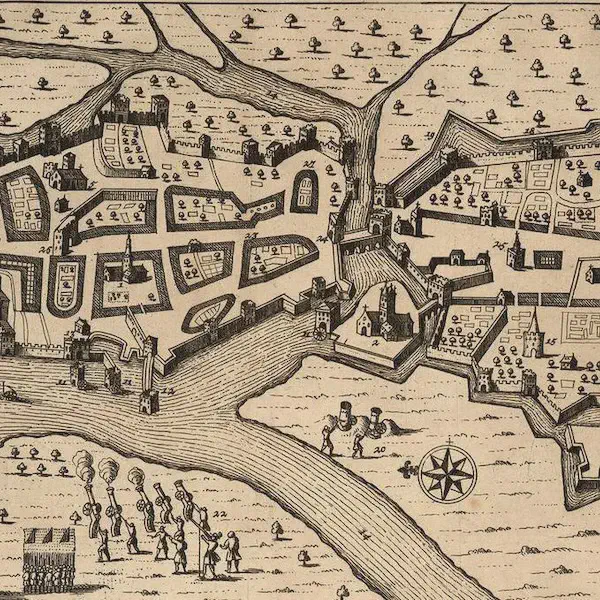
A Jacobite Force Under Patrick Sarsfield, Guided by Galloping Hogan, Destroys a Williamite Siege Train at Ballyneety, Hampering the Siege of Limerick
August 11, 1691
The event you’re referring to is the Raid on Ballyneety, which took place on the night of August 11-12, 1690, during the Williamite War in Ireland. This daring raid was a significant episode in the conflict, where a Jacobite force under the command of Patrick Sarsfield, guided by the local hero Galloping Hogan, successfully destroyed a Williamite siege train, delaying the siege of Limerick.
Background
Williamite War in Ireland: The Williamite War in Ireland (1689–1691) was fought between the forces of the deposed Catholic King James II of England, supported by Irish Jacobites, and those of the Protestant King William III, who had replaced James after the Glorious Revolution. The war was part of a larger struggle across Europe, but in Ireland, it also involved the control of the island and the rights of its predominantly Catholic population.
Siege of Limerick: After his victory at the Battle of the Boyne in July 1690, William of Orange led his forces toward Limerick, one of the last major strongholds of the Jacobite forces. To take the well-fortified city, William needed heavy artillery, which was being transported from Dublin to the siege lines.
The Raid
Patrick Sarsfield: Patrick Sarsfield was a prominent Irish Jacobite leader, known for his bravery and tactical acumen. Recognizing the importance of the siege train to the Williamite efforts, Sarsfield planned a bold strike to destroy it before it could reach Limerick.
Galloping Hogan: Galloping Hogan, a local hero and skilled horseman with extensive knowledge of the terrain, guided Sarsfield and his men through the difficult and remote countryside to intercept the Williamite convoy.
The Raid on Ballyneety: On the night of August 11-12, 1690, Sarsfield’s force, guided by Hogan, caught up with the Williamite siege train at Ballyneety, a few miles outside Limerick. The convoy was lightly guarded, and Sarsfield’s men quickly overpowered the sentries. They then destroyed the artillery, ammunition, and supplies by stuffing the cannon barrels with powder and igniting them. The explosion destroyed the siege equipment and rendered it unusable.
Impact and Significance
Hampering the Siege: The destruction of the siege train was a major setback for the Williamites. Without the heavy artillery, William’s forces were unable to breach Limerick’s defenses immediately, forcing them to prolong the siege. The delay allowed the Jacobite defenders to strengthen their positions and resist the Williamite assault.
Boost to Jacobite Morale: The successful raid was a significant morale booster for the Jacobite forces and the defenders of Limerick. It demonstrated the effectiveness of guerrilla tactics against a larger and better-equipped army and reinforced the determination of the Irish forces to continue their resistance.
Aftermath: Despite the success at Ballyneety, the Williamite forces eventually received new artillery and resumed their siege operations. However, Limerick withstood the first siege, and William withdrew his forces in the fall of 1690. The city would later fall during a second siege in 1691, marking the end of significant Jacobite resistance in Ireland.
The Raid on Ballyneety remains a celebrated episode in Irish history, particularly for its demonstration of ingenuity and bravery by Patrick Sarsfield and his men. It is a testament to the fierce resistance the Jacobites offered during the Williamite War and the strategic importance of delaying tactics in warfare.